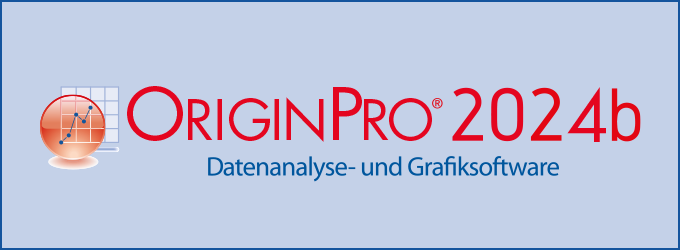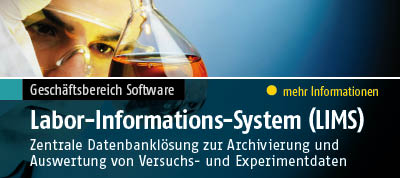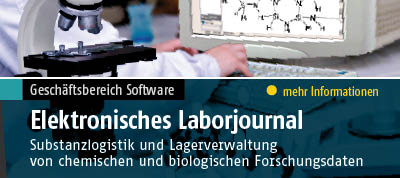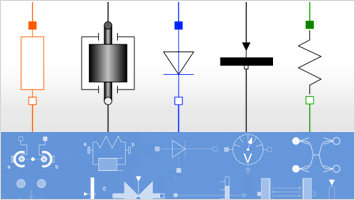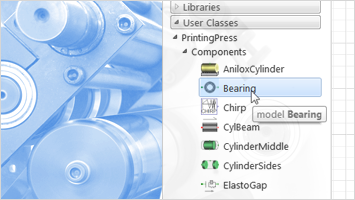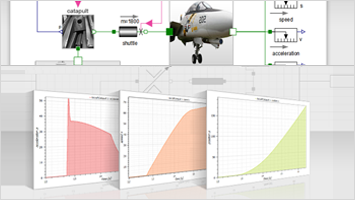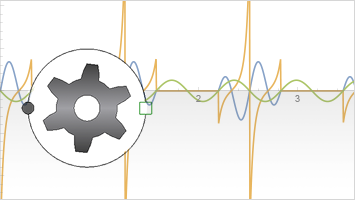Modelling
Multidomain Modeling
Real-world machines and systems are rarely confined to a single physical domain. Models can contain any combination of interconnected components from any number of domains mimicking real-world topology.
This makes it possible to uncover important effects that would be missed using a less integrated approach. The included Modelica Standard Library comes with thousands of components for translational, rotational and three-dimensional mechanics, electronics, logical and signal blocks, heat transfer, media and more.
Reusable Components
Individual components, including those you develop yourself, are separately testable and reusable, allowing you to quickly explore alternative designs and scenarios.
Components are created in the same way as models, either with existing components or directly from their defining equations. When creating your own components you can customize everything, including diagrams, icons and physics. You can create your own libraries and include models and components of your choice.
Included & Add-on Libraries

Seamlessly expand your models by adding components from a wide and expanding range of different domains. Components from colleagues, the SystemModeler Library Store and the Modelica community can be integrated into your models.
Libraries from the SystemModeler Library Store come with viewable source code, documentation and detailed examples. Modelica is an open standard, making it possible to share models between different Modelica tools. It is possible to distribute your Modelica libraries through the SystemModeler Library Store, getting access to a worldwide market and a robust licensing mechanism.

Object-Oriented Modeling with Modelica
Utilize the full power of the object-oriented, system-level Modelica language by viewing, modifying and creating the underlying physical equations and algorithms of your components.
Accurately model hybrid discrete-continuous systems by combining discrete events such as switches, collisions or state transitions with continuous equations.
Programmatic Model Creation
Manage different model configurations easily with SystemModeler. With the click of a button, you can replace the behavior and logic in your model.
Programmatically create models using the Wolfram Language, through physical equations or by connecting models together in networks. Configure your models using scripts or by setting up custom dynamic interfaces in the Wolfram Language.








